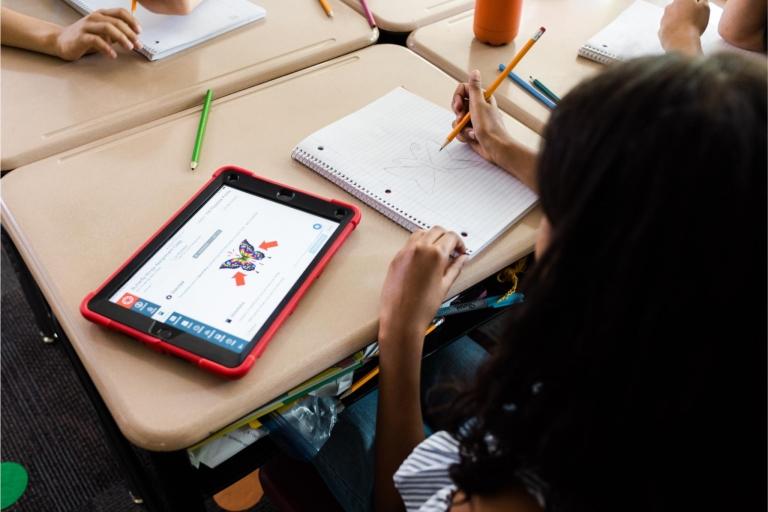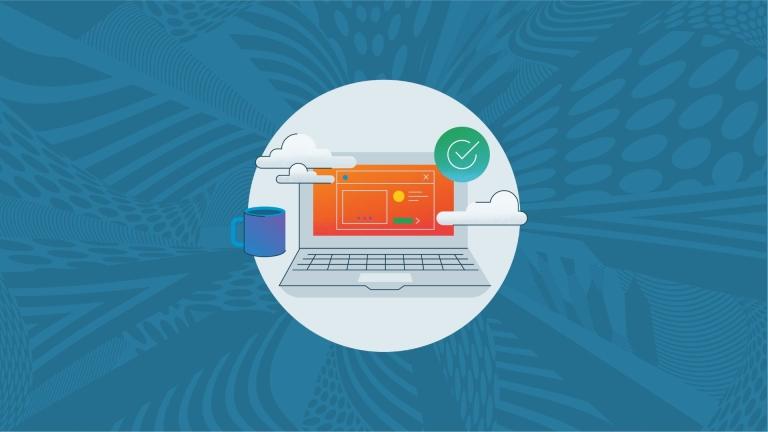
Blended learning is a widely adopted pedagogical approach that continues to evolve, transforming how educators and learners use tech in their learning environments. The practice blends online or digital components with face-to-face instruction.
With an increasing demand for flexible and dynamic learning, schools and institutions are looking for the best way to approach blended learning. One answer stands out – use a scalable learning management system (LMS). The best blended learning approach fits the needs and goals of its learning environment. In this article, we’ll examine how schools and institutions can use Canvas LMS to enhance their blended learning strategies.

What is Blended Learning with an LMS?
Blended learning is an approach to education that combines interactive online learning materials with traditional in-person classroom instruction. This approach addresses the modern vs. traditional learning debate by simply balancing the two – expanding learning opportunities for the modern student. An LMS facilitates this approach by offering tools to enhance online and in-person learning. Take a look at a few benefits of having an LMS for blended learning.
Flexibility: Students can use online learning materials to add flexibility and convenience to their experience. An LMS makes it easier for learners to access resources at their own pace.
Personalized learning: Educators can provide a tailored learning experience according to the student’s preferences and goals.
Increased engagement: With a mix of online activities and face-to-face interactions, students are provided variety, increasing interest and attention.
Collaboration: Students can collaborate on assignments and projects in and outside the classroom, making learning cooperative from anywhere.
Cost efficiency: With blended learning, educators and students can save on material costs, relying on digital tools to reduce the need for printed materials.
Easy to scale: The right LMS evolves with its school and institution, providing its organization with the best tools and experience.
Course management: Educators can manage their courses, communicate with students, and track student progress, seeing what's working and what needs improvement.
Improved assessments: Educators can customize quizzes to provide a learning experience for their students. Learn more about New Quizzes.
“Assessment data is most valuable when it’s timely and actionable.” - The State of K-12 Teaching & Learning in California
LMS Features that Drive Blended Learning
As educators continue to implement technology into the classroom, they look for opportunities to build community, ensuring students can establish authentic relationships. A learning management system can foster those relationships, driving communication and collaboration in and out of the classroom. When online, students can communicate through course discussions and other chat tools. These social learning features help students exchange knowledge and actively participate in their courses. In addition, the online learning community is strengthened as academic information and resources are shared.
Other functions, like Admin Analytics, are essential as administrators and educators track the effectiveness of blended learning. Educators use analytics to determine where students need additional support and what's working – allowing them to make data-driven decisions.
Learn more about LMS features that benefit student learning.
Developing Your Blended Learning Strategy with Canvas
“Educators are inundated with digital tools. Yet, in today’s schools, finding the best balanced blended learning approach remains vital to student success. Recent years have allowed educators to hone their blended learning recipes by testing many tools and strategies in their classrooms.” - The Best of Blended Learning, featuring Virtual Virginia
Canvas LMS is a dominating solution for schools and institutions looking to enhance their blended learning strategies. As the world-leading teaching and learning software, Canvas can facilitate learning experiences in all instructional environments. Use Canvas LMS to customize instruction, tailoring learning material to meet student needs. Here are a few ways to use Canvas to support blended learning.
Smooth integration: Instructure, the makers of Canvas, partners with technology and education leaders to amplify learning on its platform. Educators are encouraged to use relevant tools to make learning more interactive and memorable. Learn more about Canvas partnerships and integrations to see what tools you can add to instruction.
Support for Virtual Classrooms: Canvas LMS has all the tools to drive communication, assign tasks, check performance, and more. In situations where students are not in the physical classroom, learning continues as usual.
Diversifies learning: Use Canvas LMS to maximize learning potential with personalized and diversified instruction. With Canvas customization tools, educators can tailor course materials – supporting a student-centric approach.

How can Canvas Support Blended Learning?
Canvas LMS facilitates blended learning by fostering collaboration, integrating powerful learning tools, and delivering an enhanced learning experience. The platform also supports modern learning techniques like gamification and differentiation. With this support, educators and students can enjoy a seamless transition between their physical and online academic spaces.
With Canvas, educators explore what works best for their course and students. Students are then engaged as they interact in both learning modalities – receiving the best of both worlds. The goal is to create a positive and enriching digital culture while teaching and learning from traditional environments. The ultimate goals when creating a digital culture are for students:
- To learn digital citizenship
- To be kind and courageous
- To care about everyone's privacy
- To know the power of action and words
- To encourage critical thinking and creativity
- To find balance in technology-enhanced lives
Use Canvas to maximize blended learning and facilitate a positive digital culture. For additional information on creating a digital culture, read our article on digital citizenship.
Getting the Best of Both Worlds
With the right LMS, educators and learners can benefit from blended learning. Need proof? Learn how one school district used Canvas LMS for blended learning.
Related Content
 Teaching-With-Tech-10-Benefits.jpg
Teaching-With-Tech-10-Benefits.jpgBlogs
 canvas_x_tg_logo_lockup_780_x_520.png
canvas_x_tg_logo_lockup_780_x_520.pngBlogs
 roi-lms-business.jpg
roi-lms-business.jpgBlogs
